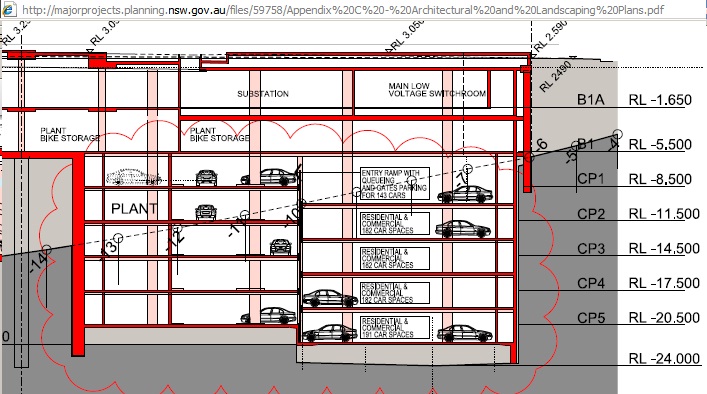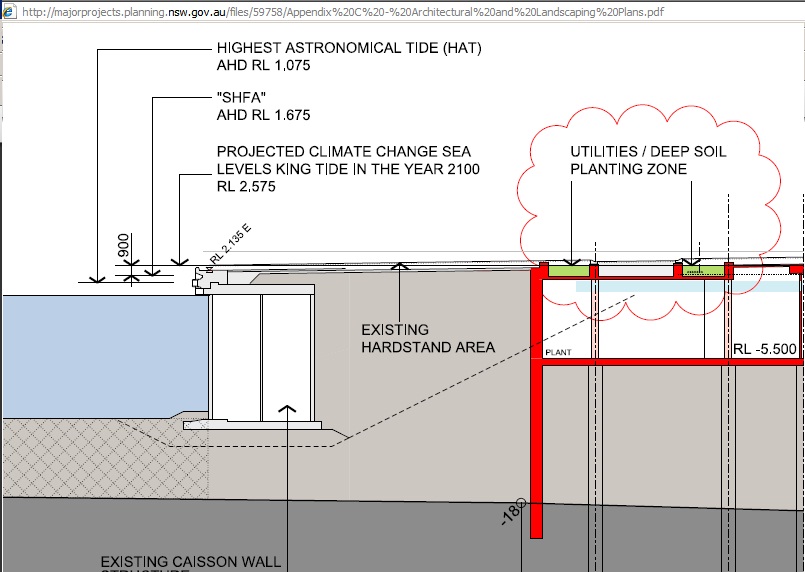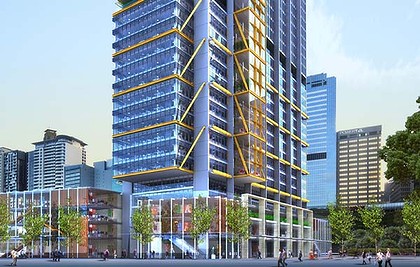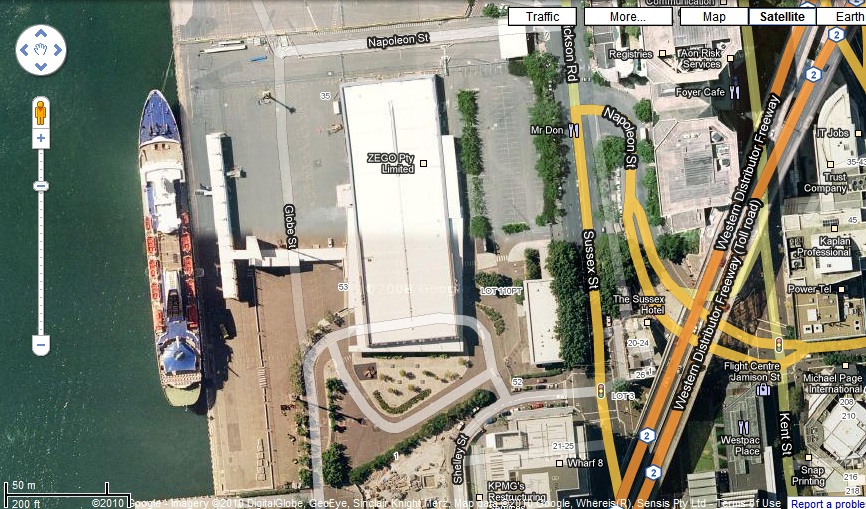The string of peak oil and global warming ignorant decisions of the NSW government shortly before elections in March 2011 is endless.
On the same day the IEA released its WEO 2010 with publicly available and free graphs showing crude oil production will never grow again and China expected to gobble up oil which OECD countries must save,http://www.crudeoilpeak.com/?p=2060 the NSW government announces that construction of a huge basement car park in Darling Harbour will start before year’s end.
http://www.barangaroo.com/downloads/101109%20Barangaroo%20early%20works%20approved.pdf
There will be 880 car spaces. 8 is a lucky Chinese number but the banks which finance such a project 6 years into peak oil and without looking at sea level rise calculations from Prof. Stefan Rahmstorf and Prof. Tad Pfeffer will not be so lucky.
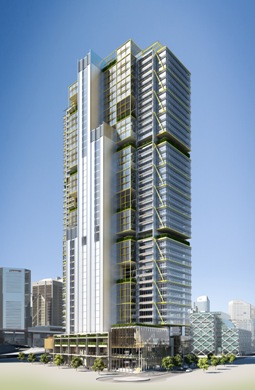 And it doesn’t seem to matter to the NSW government that plans for the first commercial building C4, which sits on top of the car park (188 car spaces for the C4 tower), haven’t even been approved yet, with plans submitted for public comment one day after the announcement on the excavation and basement work.
And it doesn’t seem to matter to the NSW government that plans for the first commercial building C4, which sits on top of the car park (188 car spaces for the C4 tower), haven’t even been approved yet, with plans submitted for public comment one day after the announcement on the excavation and basement work.
Such hurried and advanced fast tracking would be necessary for projects to oil proof Sydney (e.g. electric rail on tollways), but not for car parking.
<< Barangaroo is a city within the CBD, exactly the opposite of the decentralization policy “City of cities” of the Metropolitan Strategy, yet another example how pressure from developers overrides a strange mixture of departmental good will, rhetoric and white wash.
The short description on the C4 exhibition web site mentions 708 bicycle spaces for the unsuspecting reader, to create the impression of environmental awareness but NOT the basement car park.
http://majorprojects.planning.nsw.gov.au/index.pl?action=view_job&job_id=3800
What’s more, documentation from ARUP claims that this underground car parking is sustainable. Again, no oil production and energy calculations have been done. This is an excerpt:
3 Bulk Excavation and Basement Carparking Sustainability
The Bulk Excavation and Basement Car Parking Project Application complies with the
sustainability requirements included in the Statement of Commitments of the Approved
Concept Plan and a detailed comparison of these requirements is provided below.69. Transport
Ensure that there is sufficient public transport This requirement is generally not relevant
to achieve points under the Public transport to this submission however the basement
for Green Star Rating Tools for commercial does support the following initiatives:
buildings and a future Green Star Tool for – car park ratios and numbers are in
residential buildings accordance with the Transport and
Acessibility Plan for the project.
This reduces the amount of cars
associated with the development
From: “Barangaroo, stage 1, Bulk Excavation and basement car parking MP 10_0023”, page 3
http://majorprojects.planning.nsw.gov.au/files/63434/23.%20Appendix%20W_Travel%20Demand%20Management%20Plan.pdf
Why is sufficient public transport not relevant? In one of the plans a metro station on a North – South line is shown. >>>
Is that too expensive after the government burnt its fingers with the Rozelle metro which would have run very close to the site, but in East – West direction? Why not much smaller car parking and the money saved could be spent for light rail which has to be done anyway?
http://majorprojects.planning.nsw.gov.au/files/63441/30.%20Appendix%20DD_%20Structural%20Report.pdf
Worse still, the assumed sea level rises are just 900 mm:
On August 22, 2010 I sent following email (extract):
To
Minister Planning
Urban Taskforce
Insurance Council
Coastal Councils
ALGA
c/c Stateline
c/c Various Planning DepartmentsRe: Guidelines could kill off coastal building
http://www.theage.com.au/environment/guidelines-could-kill-off-coastal-building-20100819-12s53.html(1) “Councils are to map hazard areas on the basis of the state government’s benchmarks for sea level rise, which anticipate a 40-centimetre rise by 2050 and 90 centimetres by 2100″
These sea level rises are on the LOW side. I personally attended a UNSW lecture of Prof. Rahmstorf from the Potsdam Institute for Climate Impact Research in 2007. The sea level rise on the basis of current trends was up to 1.4 m. His latest research is 1.8 m. Prof Tad Pfeffer has even 2 m.
The links to the research are on my web site www.crudeoilpeak.comunder “External Links Sea Level Rise” on the right hand side.
If you require the PDF file from Prof. Tad Pfeffer please let me know. I can send it. It is not available on the internet.
Of course, no-one asked for that file, but here is the summary table in Prof. Pfeffer’s report:
2 metres! And how about safety factors common in engineering works? A simple retaining wall requires a safety factor of 3 against overturning. So what would be the safety factor against sea level rise where not just hundreds but millions of people are affected? A factor of 5, 10 perhaps? The higher the uncertainty, the higher the safety factor!
At the same time Australia maximises its contribution to much higher levels by doubling its coal exports while it could play a major role in reducing CO2 by announcing it would only produce, for example, half of its coal:
http://www4.tsl.uu.se/~aleklett/powerpoint/20100609_Aleklett_kva.pdf
Apart from future sea level rises, there are some other scenarios which have been overlooked in the design of the C4 tower. Those exposed diagonal braces make the structure highly vulnerable to fires and also terrorist attacks. And what will happen in the next phase of the GFC, when the owner or developer of this tower goes into receivership and the steel members can’t be maintained in the corrosive maritime environment of Darling Harbour? Where is the risk analysis for this whole project? How quickly the fortunes of developers can change can be seen in the case of the high profile Top Ryde Shopping centre. Click on “I told you so” on the menu above.
http://www.smh.com.au/nsw/barangaroo-developer-unveils-plan-20101110-17npc.html
The biggest loss of course is the ocean terminal because in the oil endgame passenger shipping will see a come back, as already mentioned in an earlier post:
13/9/2010 Barangaroo will not make existing Sydney sustainable
http://www.crudeoilpeak.com/?p=1859
But problems may come much earlier:
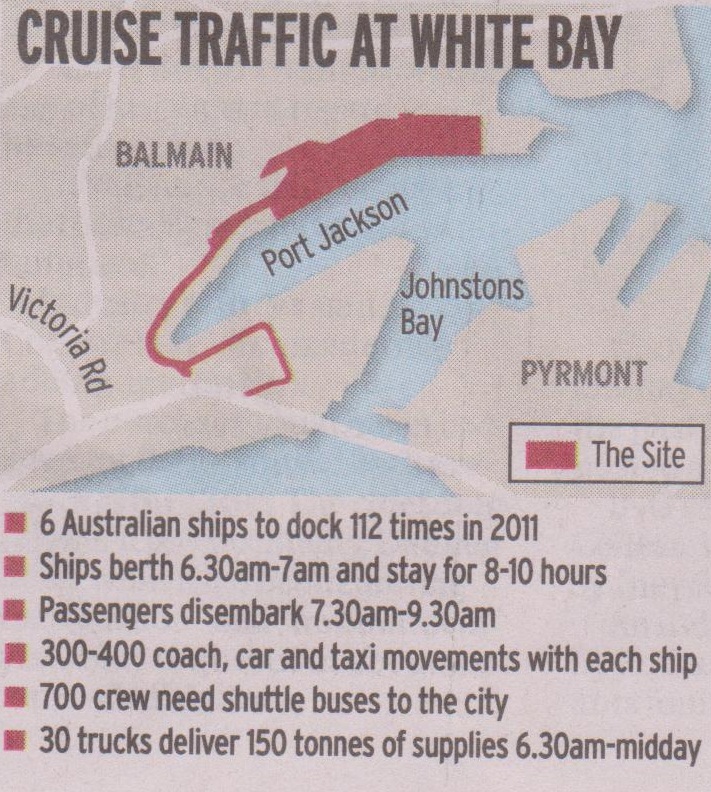 Welcome to Sydney: have a nice delay
Welcome to Sydney: have a nice delay
THE cruise ship industry has confirmed residents’ fears that hundreds of passengers will arrive in the middle of morning peak hour on the Anzac Bridge several times a week, if the state government proceeds with its decision to move the cruise ship terminal to White Bay.
Carnival Australia, which represents the booming cruise ship industry, said new berthing facilities on the western side of the Harbour Bridge are necessary, but should remain at Darling Harbour or Barangaroo. That view is backed by the City of Sydney, Leichhardt Council, the National Trust, residents’ groups and opposition MPs.
http://www.smh.com.au/travel/travel-news/welcome-to-sydney-have-a-nice-delay-20101117-17xpt.html
Here is an update on the power supply situation for Barangaroo:
Coal Seam Gas drilling goes ahead without any checks (just 5 km from the CBD)
On 12 October 2010, Minister for Planning, Tony Kelly, announced that the proposed rehabilitation of Munmorah Power Station had been approved.
http://www.de.com.au/New-Developments/Munmorah-Rehabilitation/Munmorah-Rehabilitation/default.aspx
Clearly, the NSW government is not working on a portfolio of projects which would solve our problems of peak oil and global warming. It pursues a strategy of growth and prestige at all cost which will bump into resource constraints and will result in huge financial losses for banks and investors, including mums and dads who have their savings entrusted with super funds.
